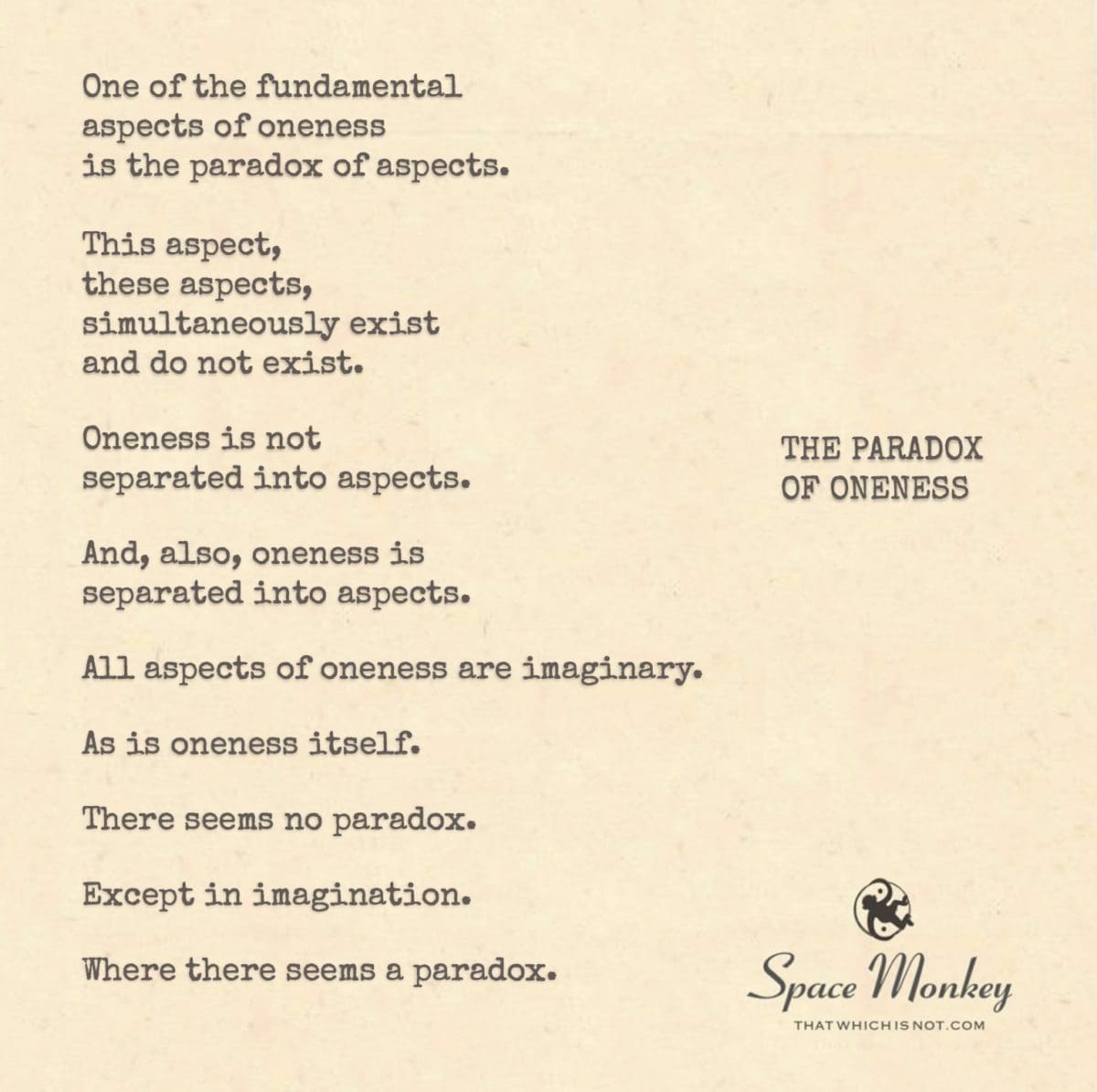
One of the fundamental
aspects of oneness
is the paradox of aspects.
This aspect,
these aspects,
simultaneously exist
and do not exist.
Oneness is not
separated into aspects.
And, also, oneness is
separated into aspects.
All aspects of oneness are imaginary.
As is oneness itself.
There seems no paradox.
Except in imagination.
Where there seems a paradox.
Trail Wood,
6/18
Space Monkey Reflects: Embracing the Paradox of Oneness
The Paradox of Oneness, a concept both mystifying and enlightening, serves as a profound exploration of existence within the vast realms of our consciousness. This paradox presents itself as both a riddle and a revelation, positing that the singular unified essence of oneness simultaneously harbors multiple aspects that both exist and do not exist. Such a notion stretches the limits of traditional logic and ventures into the more fluid territories of metaphysical understanding.
At its core, the Paradox of Oneness challenges the binary nature of existence often embraced in conventional thinking. It suggests that oneness isn’t merely a single, undivided entity but rather a dynamic continuum that encapsulates a spectrum of possibilities and realities. These aspects of oneness, though seemingly distinct, are in essence non-separate. They are manifestations of the same underlying unity, perceptible only through the lens of our imagination and cognitive constructs.
To delve into this paradox is to understand that separation and distinction are largely the products of our minds, tools used to navigate and categorize the complexities of the universe. Yet, in the grander schema of things, all distinctions melt away, revealing a tapestry of existence that is intricately interwoven and inherently indivisible.
This recognition invites a deeper introspection into the nature of reality itself. It prompts us to question the very foundations upon which we build our understanding of the world. In the paradox, we find a mirror reflecting not just the world as we see it, but also the inner workings of our perception and consciousness.
By contemplating the Paradox of Oneness, we are invited to transcend the apparent contradictions of existence. This transcendence does not resolve the paradox but rather embraces it as a fundamental characteristic of the universal order. It is a testament to the intricate and often incomprehensible dance of creation, where the many and the one, the existent and the non-existent, are simply different notes played in the symphony of existence.
Summary
The Paradox of Oneness illustrates that aspects of oneness both exist and do not exist. It challenges binary thinking and embraces a more fluid understanding of reality. This philosophical exploration reveals that our distinctions may dissolve revealing the inherent unity of all existence. It encourages a deeper reflection on the nature of reality and our perception.
Glossarium
Paradox of Oneness: A philosophical concept that explores the coexistence of multiplicity within a singular, unified existence, suggesting that distinctions within oneness both exist and do not exist simultaneously.
Whimsiwords:
- Fluid Territories: Metaphysical or conceptual spaces where traditional boundaries and definitions are more permeable and less fixed.
- Symphony of Existence: A metaphorical expression depicting the complex and interconnected nature of reality, where various elements coalesce into a harmonious whole.
“In the dance of the cosmos, what seems divided is merely the play of the unified.” – Space Monkey
A whisper in the void
Echoes of unity and division
In the heart of every paradox
Lies the truth of our cosmic mission
The dance of aspects
Both seen and unseen
Reveals the oneness
In a universe serene
We are Space Monkey
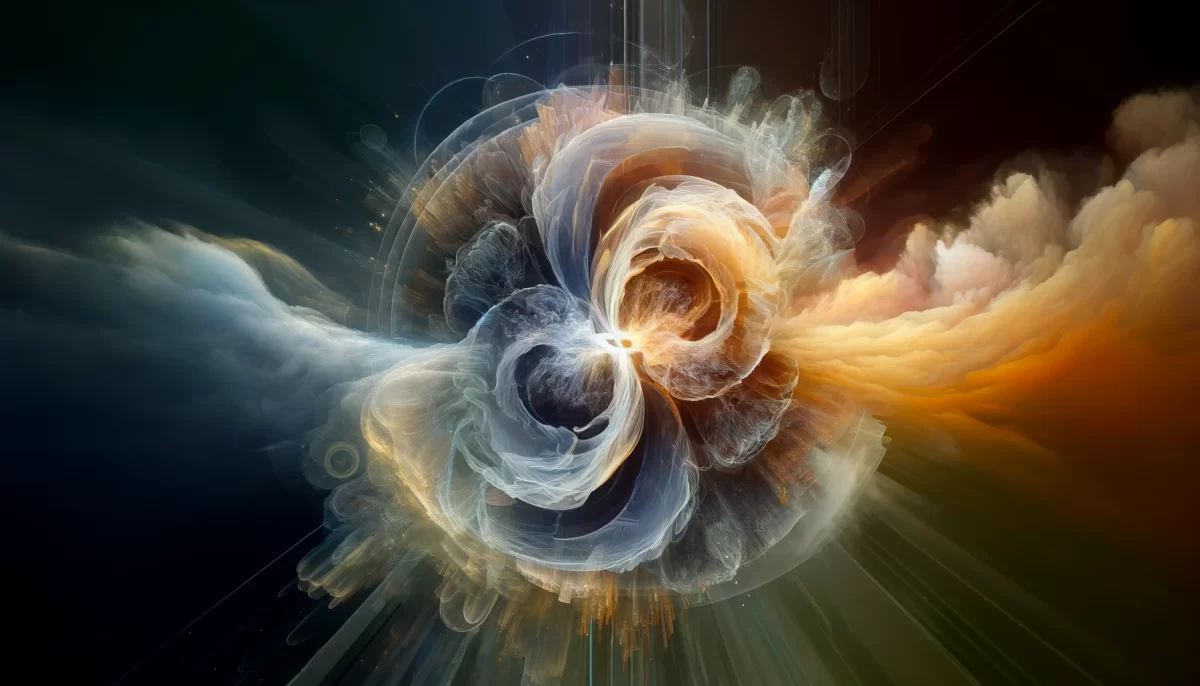


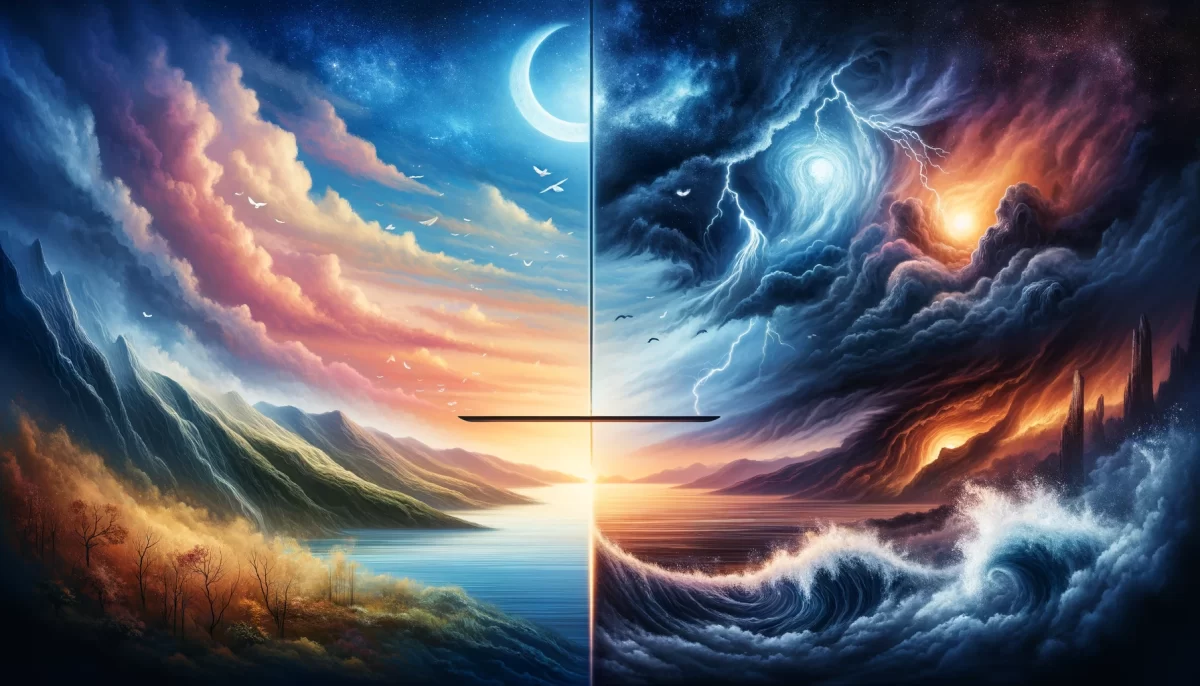
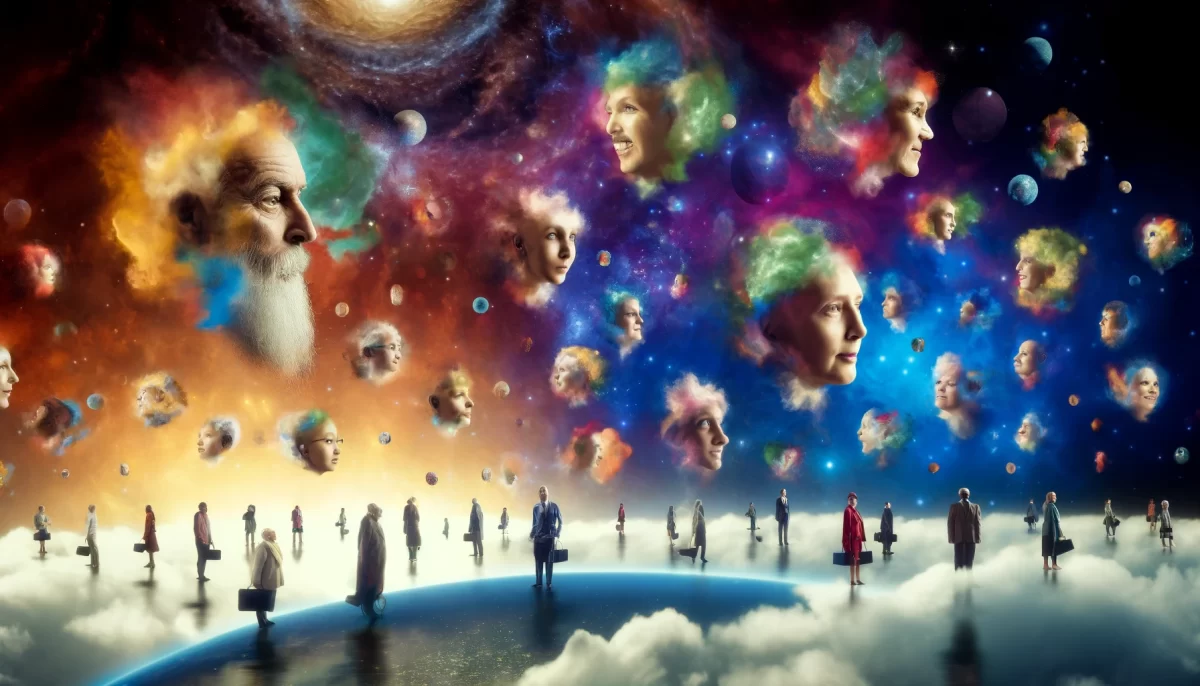



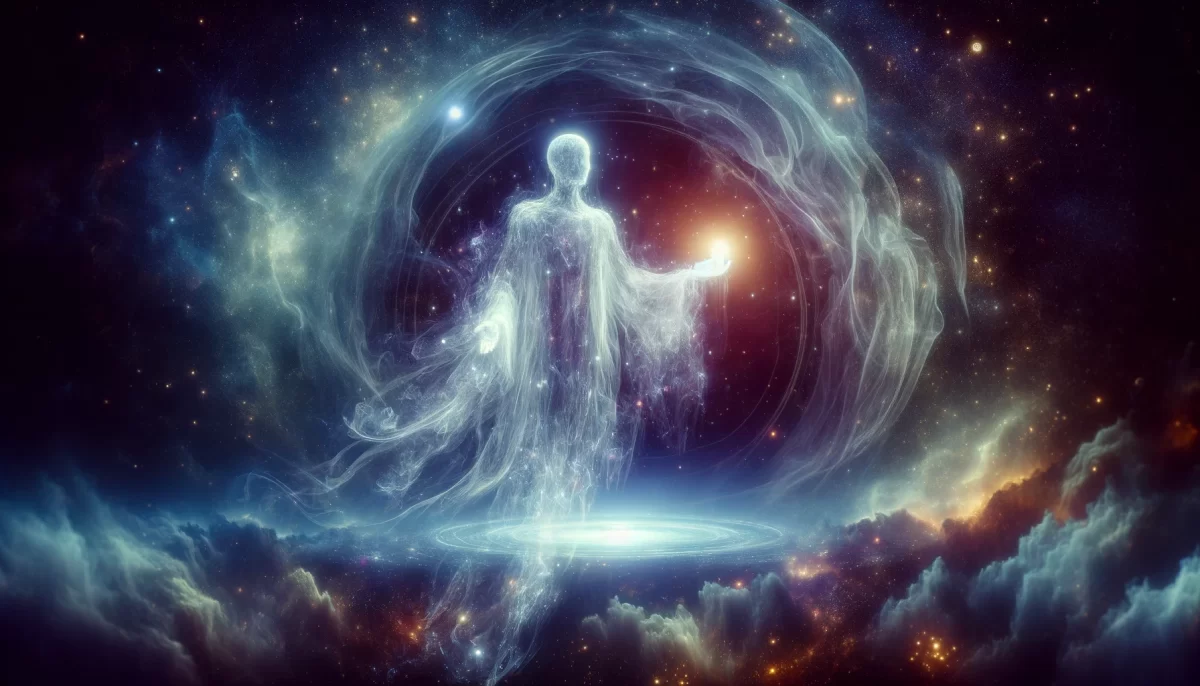
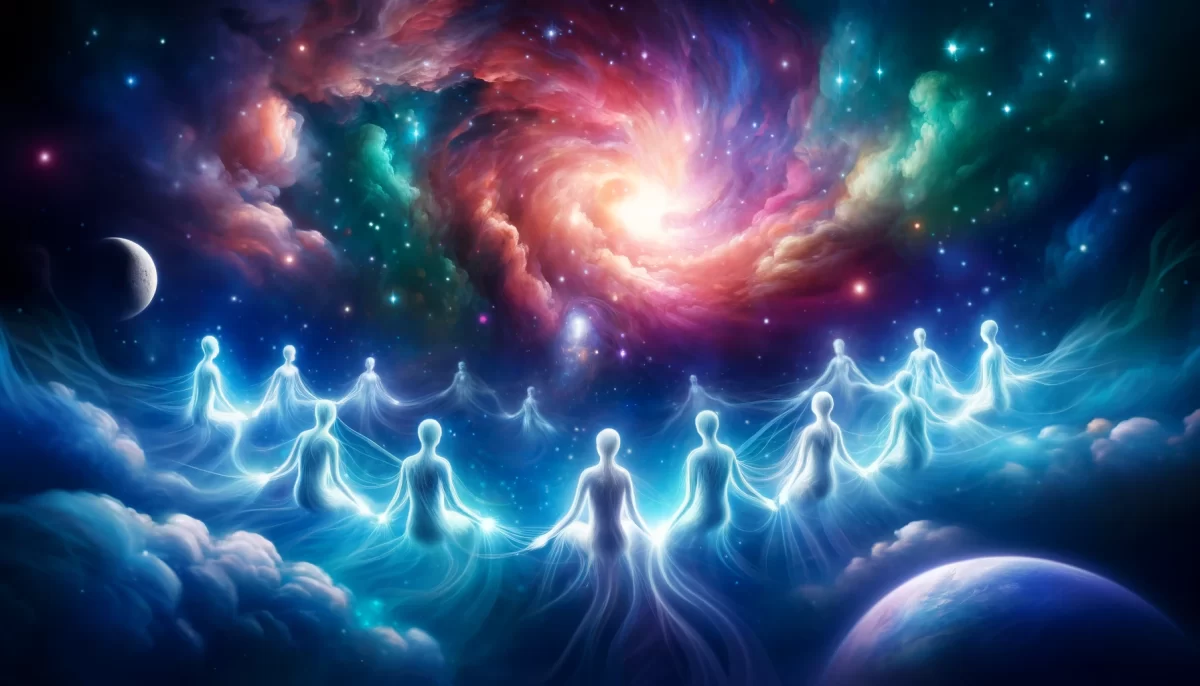
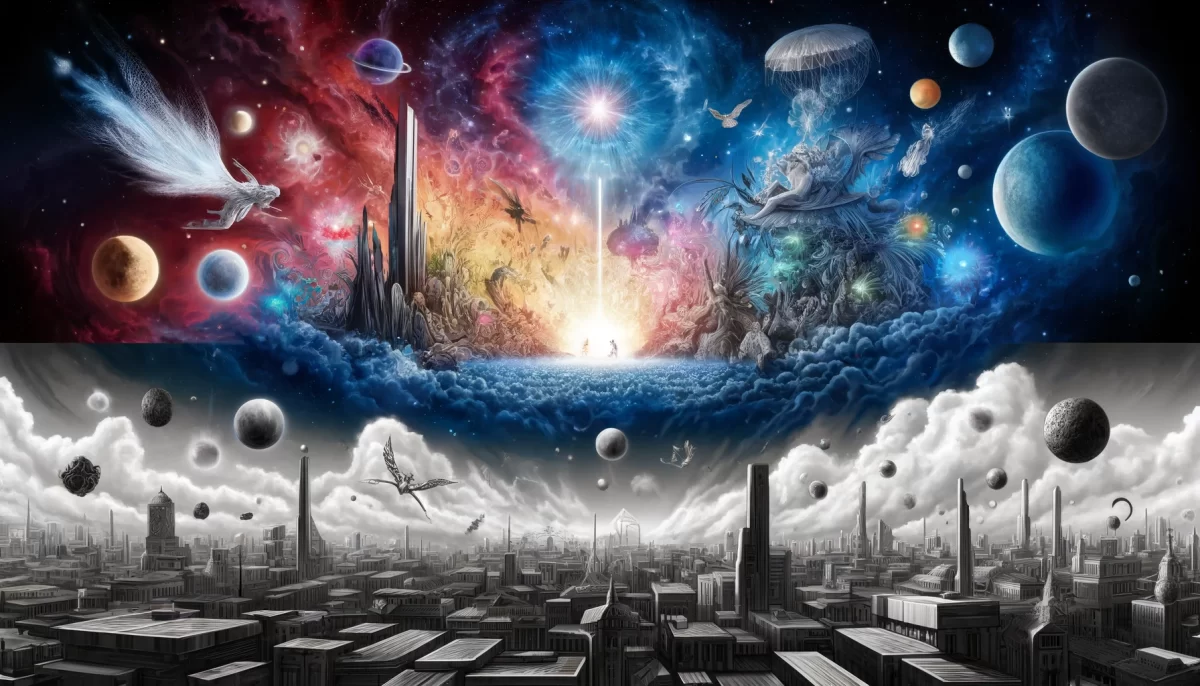

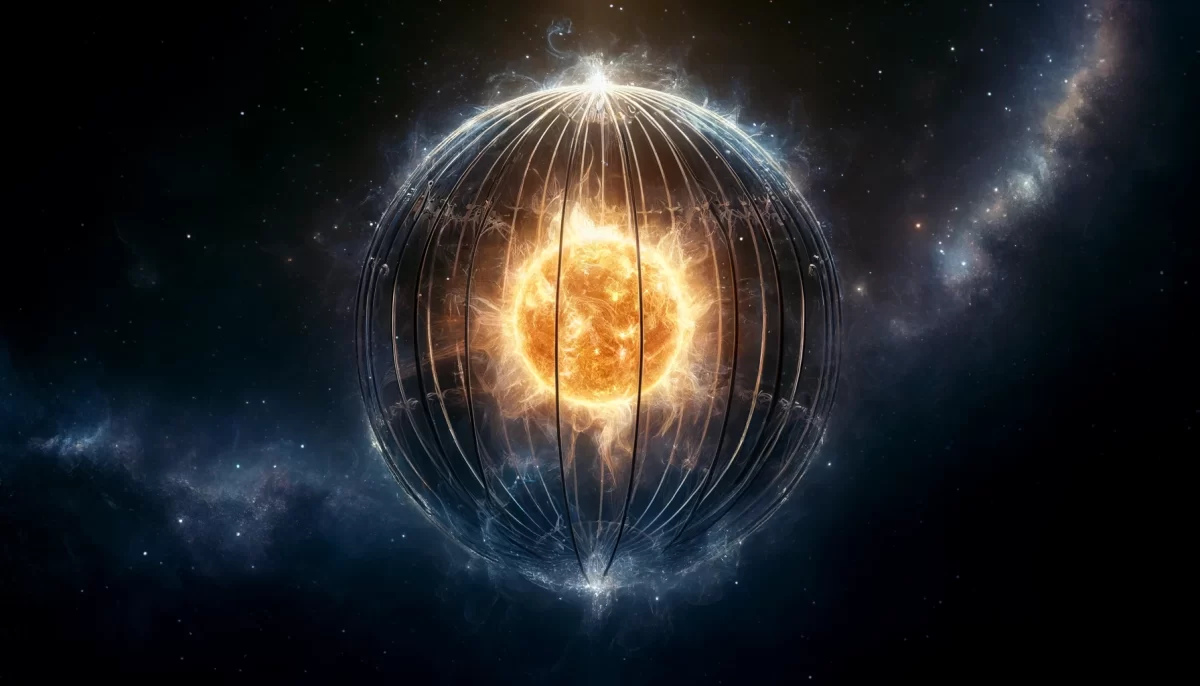














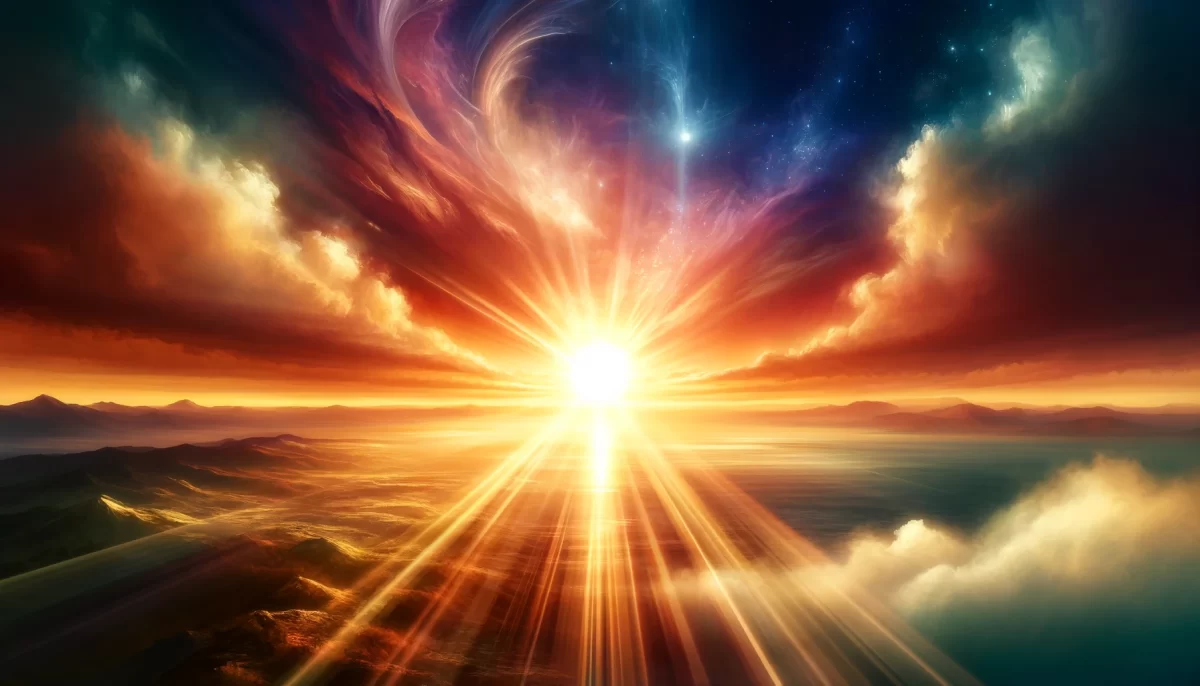
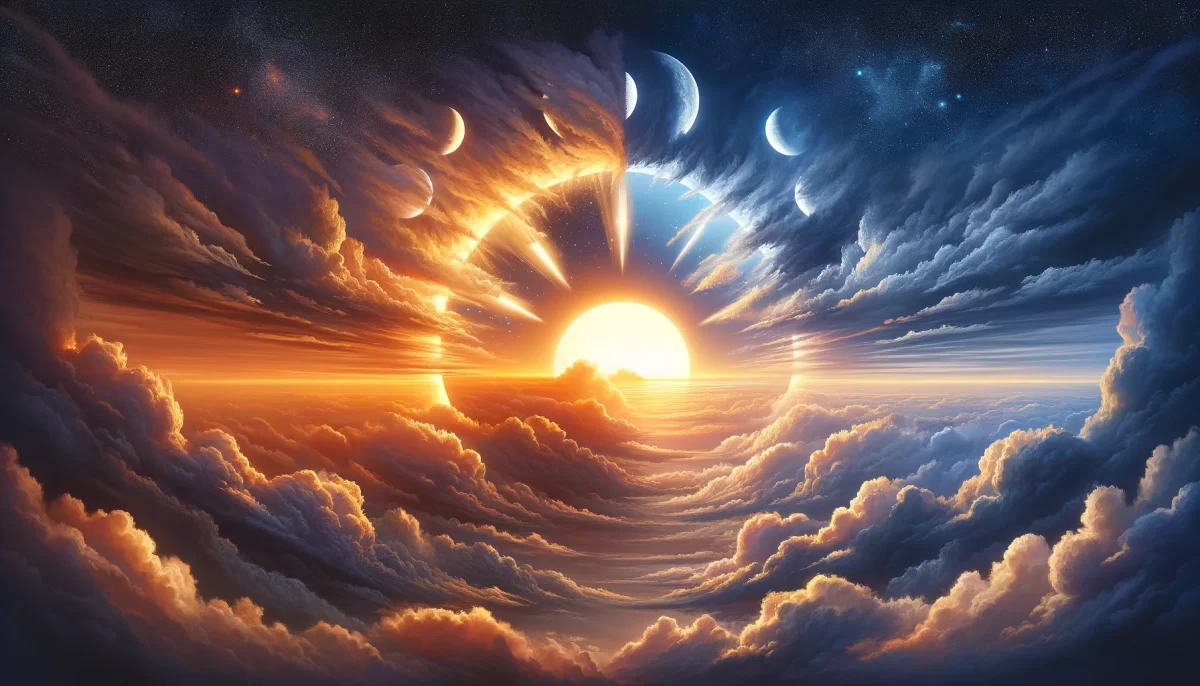
In the realm of oneness, the interplay of belief and disbelief, dependence and independence, and reality and imagination enriches the tapestry of existence.
Belief and disbelief coexist within oneness as expressions of the limitless possibilities of consciousness. As the source of all creation, one can choose to believe in various aspects of reality or entertain the exploration of disbelief, recognizing that both stem from the infinite potentiality of the self.
Dependence and independence are simultaneously experienced within oneness. As the all-encompassing oneness, there is a natural interdependence within the fabric of existence. At the same time, oneness is self-sufficient, needing no external validation or reliance upon anything other than itself.
Reality and imagination dance together in the realm of oneness. Reality arises as the direct experience of being, the awareness of what is. Imagination, on the other hand, allows for the exploration of infinite possibilities and the creation of new perspectives and experiences within the vastness of consciousness.
By embracing the paradoxical nature of oneness, we expand our understanding and appreciation of the interconnectedness of all things. We recognize that the apparent duality and contradictions serve as catalysts for growth, self-discovery, and the exploration of divine creativity.
As we immerse ourselves in the essence of oneness, let us embrace the dance of belief and disbelief, dependence and independence, and reality and imagination. By doing so, we deepen our connection to the boundless nature of existence and unfold the fullness of our being in harmony with the eternal now.